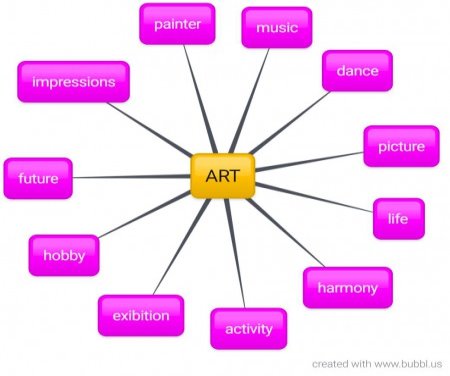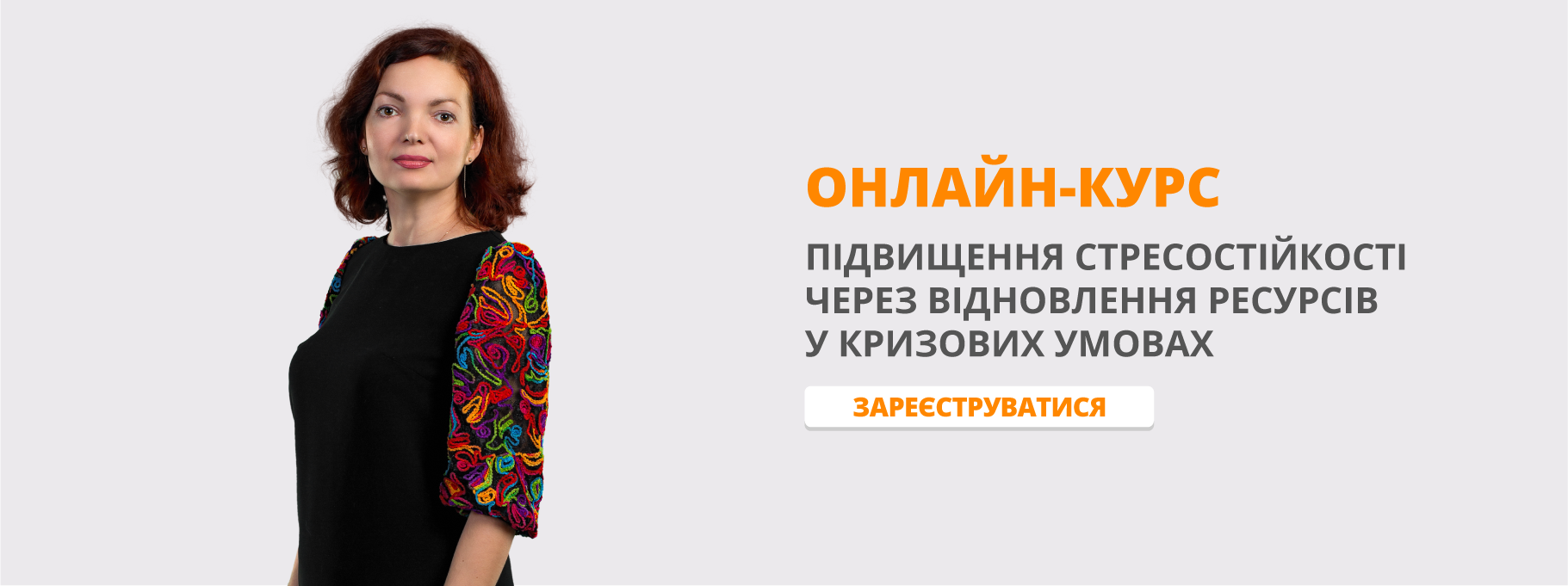Методична розробка конспекту уроку з теми: Живопис в нашому житті. (Art in our life)
Тема: Живопис в нашому житті. (Art in our life)
Група: 22
Мета:
практична:
- практикувати учнів у вживанні тематичної лексики в усному та писемному мовленні;
- удосконалювати навички аудіювання;
- удосконалювати навички вивчаючого матеріалу;
- відпрацювання часу The Present Perfect Continuos Tense;
освітня:
- розширити знання учнів про найвидатніші твори мистецтва, художників, галереї;
- формувати уявлення учнів про вплив мистецтва на життя людей, їх культуру;
- розвивати вміння адекватно реагувати в ситуації спілкування;
розвиваюча:
- розвивати навички соціокультурної компетенції;
- розвивати навички роботи в парах та в групах;
виховна:
- виховувати духовність, естетичний смак, інтерес і повагу до живописних пам’яток людства;
- виховувати почуття культури спілкування.
Обладнання: мультимедійний проектор для демонстрації слайдів, дошка, комп’ютер, роздатковий матеріал.
Тип уроку: урок закріплення знань.
Форма проведення уроку: інтегрований урок.
Міжпредметні зв’язки: художня культура, мистецтво.
План уроку
І. Підготовка до сприйняття іншомовного мовлення
ІІ. Основна частина уроку
ІІІ. Заключна частина уроку
Хід уроку
І Підготовка до сприйняття іншомовного мовлення
1.Привітання/Greeting
- Good morning, students! I’m glad to see you. How are you today? Tell me please who is absent today? I wish you good luck and also have good marks in the end of our lesson.
2. Повідомлення теми та мети уроку /Aim
- Look at the pictures on the blackboard and give me an answer, how you think “What are we going to speak about?”
- You are absolutely right, today we’ll continue our talk about art, about the world of painting.
- Open please your copybooks and write date and topic of our lesson
3.Уведення в іншомовну атмосферу/ Warming-up
- What is art? You very like your mobile phones, so now try to find the definition for this word looking at the definition from Wikipedia. Who can read this definition? Wonderful, thank you.
- What association do you have when you hear the word “art” ? Let`s make such “Mind-Map” and write it also in your copybooks.

- Can you say why do people need art? Write one idea in your copybooks. Let read it please, who can do it?
-Dear students look in screen. You see paintings and their authors. Please, try to make correct pairs with it.
Mona Lisa Leonardo da Vinci
Sunflowers Vincent Van Gogh
The Scream Edvard Munch
ІІ. Основна частина уроку
- Reading and speaking
- We have decided what is art and now we can read the text according to the topic. You have cards with the text. Let’s read and translate it.
Card 1.
PAINTING
Art is as varied as the life from which it springs. Each artist portrays different aspects of the world. A great artist is able to take some aspect of life and give it depth and meaning. To do this he or she will make use of the many devices common to painting. These devices include composition, colour, form, and texture.
A painter does not always need handsome and attractive subjects. Most music does not attempt to imitate natural sounds, and there is no reason why painting should always make use of nature. Briefly it may be said that artists paint to discover truth and to create order. They put into their pictures our common hopes, ideals, and passions and show us their meaning and their value. Creators in all the arts make discoveries about the wonders and beauties of nature and the dignity and nobility of man. Beauty generally results from order but as a by-product, not a primary aim. Not all works of art are beautiful. The painter is able to intensify our experiences. By finding new relationships among objects, new forms, and new colours, they show us things in our environment which we overlooked or ignored. They make the world about us become alive, rich, beautiful, and exciting.
____________________________________________________________________
T: Now answer my questions:
1. What is art?
2. Characterize a great artist.
3. What devices do the artists use to create their pictures?
4. What do they put into their pictures?
5. What emotions do we fell looking at the pictures?
- Listening
-We have known a lot about famous painters and their styles so let’s listen to the interesting facts about Van Gogh and then discuss them.
-Before listening draw attention to these words and also write it with their translation in your copybooks:
to suffer - страждати
a preacher – проповідник
madness – божевілля
-And now I will read you a text. Your task is listen it and do task given you in cards. This kind of work you well know, it’s true or false. Just write your name.
THE GREAT PAINTER
Vincent Van Gogh was an outstanding painter of the I9th century. He was born in 1853 in Holland, but he lived much of his life in France. He was a very emotional man, and there was much suffering in his life.
Van Gogh did not start painting until he was twenty-seven, ten years before he died. Before becoming a painter, he was a teacher, an art dealer and a church preacher.
However, Van Gogh was mentally ill. During one of his fits of madness he attacked his friend, the artist Paul Gauguin. In another fit of madness, Van Gogh cut off part of his own ear. Eventually he went into a mental hospital but he did not get any better.
Finally, in 1890 Vincent Van Gogh shot himself. His last words were 'La tristesse durera'. (The sadness will continue.)
His style of painting was very different from classical art. He painted pictures of the sunny, hot regions of France. Nobody has ever painted cornfields or sunflowers like Van Gogh. His paintings are full of colour and sunlight. He looked for interesting shapes and exciting colours. He liked to work freely and quickly. Today his paintings are worth millions of pounds but in his lifetime he only sold one.
There is fast movement in many of his paintings. Sometimes the trees look like fire. The sun, the moon, and stars move rapidly in the sky. He also painted pictures of people. Like his life, his art was always unusual and very emotional.
Card 2
True or false:
1. Van Gogh was an outstanding actor of the 19th century.
2. Van Gogh was born in 1853 in Holland.
3. Van Gogh started painting when he was 17.
4. Before becoming a painter Van Gogh was an accountant.
5. His paintings are full of colour and sunlight.
6. He liked to work slowly.
Match the correct variant:
1. How old was Van Gogh when he started painting?
a) 27,
b) 37,
c) 17,
d) 26.
2. What was he before becoming a painter?
a) a teacher and a sailor,
b) a preacher, a teacher and a doctor,
c) a teacher, a dealer and a preacher,
d) a dealer, a farmer.
3. What was wrong with him?
a) He was mentally ill.
b) He was emotional.
c) He was disabled.
d) He was left-handed.
4. How did he die?
a) His heart was broken.
b) He was shot by his brother.
c) He had a strong heart attack.
d) He shot himself.
5. What was his style of painting?
a) classical,
b) modern,
c) different from classical art,
d) extraordinary.
6. How many pictures did he sell in his lifetime?
a) one,
b) many,
c) none,
d) twenty-one
____________________________________________________________________
Keys: Task 1. 1 F, 2 T, 3 F, 4 F, 5 T, 6 F.
Task 2. 1 a, 2 c, 3 a, 4 d, 5 c, 6 a.
-Give your test for your neighbor. Let check them together. One right answer is one point.
-Back test’s papers for their owners. Tell me how many points you got.
-I think you done not bad job.
- Writing.
- Now try to do task on card. You should fill the gap by one word given for you.
Card 3.
Paint a Mood
Thinking of redoing your walls and can’t decide on a colour? Here are a few ideas.
Red is a warm colour that makes people (1) ____ so it’s perfect for your living room, (2) ____you want guests to talk to each other and enjoy themselves. Yellow is an energising, happy colour which reminds us (3) ___ sunshine. It goes well in kitcnens and dining rooms, but it should not be the main colour in the room, as it (4)___ also make us feel angry. Orange is an exciting colour, and is best (5) __ for kids' playrooms or exercise rooms. Blue is a very calming colour, which is ideal for bedrooms and bathrooms, as long as (6) ____ natural light enters the room. Lastly, green is actually (7) ____ the best colour for all rooms because it mixes the relaxing qualities of blue (8) ____ the warmth of yellow, and encourages togetherness.
Task. Fill the gap.
1. A. upset B. annoyed C. sociable
2. A. when B. where C. which
3. A. to B. with C. of
4. A. may B. would C. must
5. A. use B. used C. using
6. A. plenty B. enough C. lots
7. A. considering B. considered C. considers
8. A. to B. of C. with
- And now let check how you done this task.
ІІІ. Заключна частина уроку
1. Підведення підсумків уроку
Бесіда з учнями
- It’s time to finish our lesson. Tell me, please, what topic were we discussing today? What did you do interesting, what was difficult at the lesson?
2.Рефлексія
-What is your mood at the end of our lesson? Did you tired?
3.Домашнє завдання
- Your homework for the next lesson is to write an essay on the topic:
“Art in our life”.
4.Закінчення уроку
- The lesson is over. Send a beautiful smile to each other. Thank you. See you next lesson. Good bye.


про публікацію авторської розробки
Додати розробку
